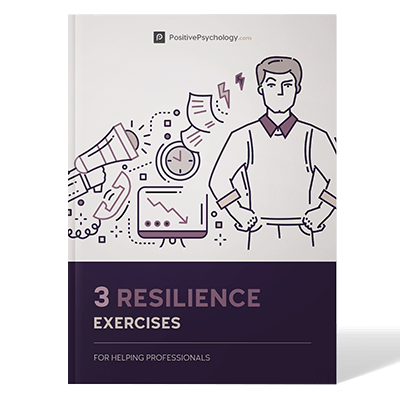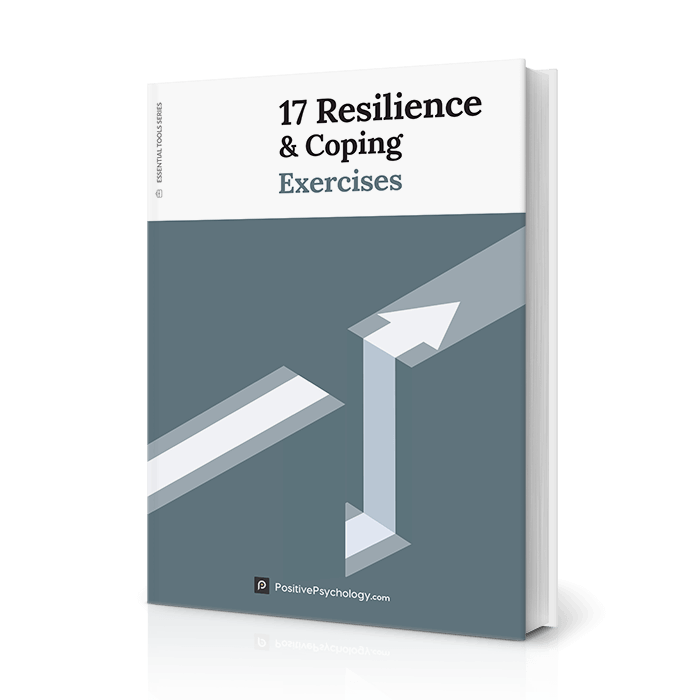10 Science-Backed Interventions to Help You Cope
Coping with the risk of vicarious trauma is crucial for individuals who work in helping professions, such as therapists, counselors, nurses, social workers, and emergency responders.
Each of these 10 positive psychology interventions is linked to science-based articles packed with free resources designed to move you from surviving to thriving and post-traumatic growth.
1. Self-care practices
Engage in regular self-care activities such as exercise, meditation, self-soothing, hobbies, or spending time with loved ones. Taking care of your physical and mental health is essential for resilience.
For more ideas, take a look at our article 10 Self-Care Tips for Psychologists, Therapists & Counselors.
2. Supervision, peer support, and mentoring
Regular supervision sessions with a supervisor or peer support groups can provide a safe space to process difficult emotions and experiences. Sharing with others who understand the nature of your work is validating and supportive. Mentoring and coaching can provide extra support during difficult times and help prevent burnout.
3. Healthy boundaries
Maintaining clear boundaries between work and personal life sets limits on your exposure to traumatic material. Learn to say no when necessary and prioritize your own needs.
Take a look at our article How to Set Healthy Therapist–Client Relationship Boundaries for tips.
4. Mindful grounding techniques
These practices help you to stay present and manage overwhelming emotions. Techniques such as deep breathing, progressive muscle relaxation, or guided imagery can help you stay centered and in the moment.
Our article 10+ Mindful Grounding Techniques is packed with resources.
5. Education and training
Attend workshops, seminars, or training sessions on trauma-informed self-care strategies. Our article 23 Post-Traumatic Growth Worksheets for Therapy explores the science and provides worksheets you can use to grow from vicarious trauma.
6. Take a break
Regular breaks are needed to rest and recharge. Schedule time off to disconnect from work-related stressors and focus on rejuvenating activities.
We shouldn’t regard rest as a reward for hard work, but as the foundation of optimal productivity and wellness. Our article Non-Sleep Deep Rest (NSDR): Exploring a World Beyond Sleep explores the latest science in detail and is full of NSDR resources.
7. Use your creativity
Engage in creative self-expression such as writing, art, music, or dance to express and process your emotions in a healthy way.
Creative activities are a form of self-expression, reduce stress, and boost catharsis. Read our article Fostering Creativity: 12 Strategies to Boost Creative Skills to learn more.
8. Reflective practice
Reflect on your experiences and reactions to challenging situations. Journaling or regular self-reflection exercises can help you gain insight into your emotional responses and identify patterns or triggers.
Try our 87 Self-Reflection Questions for Introspection [+Exercises] for ideas.
9. Self-compassion practices
Self-compassion involves treating yourself with kindness, understanding, and acceptance, especially during times of suffering or difficulty. Cultivating self-compassion through practices such as self-soothing and mindfulness can help individuals cope with vicarious trauma and reduce the risk of burnout (Hashem & Zeinoun, 2020).
Try these 8 Powerful Self-Compassion Exercises & Worksheets.
10. Eye-movement desensitization and reprocessing (EMDR)
EMDR involves reprocessing traumatic memories while engaging in bilateral stimulation, such as eye movements or tapping.
EMDR can reduce symptoms of vicarious trauma and improve emotional resilience in mental health professionals who work with child abuse and neglect (Tsouvelas et al., 2019).
Take a look at Your Ultimate EMDR Guide (Incl. Techniques & Exercises) to find out more.
Remember that coping with vicarious trauma is an ongoing process, and it’s essential to prioritize your wellbeing and seek support when needed.
 Vicarious trauma refers to the impact of repetitive encounters with indirect trauma while working as a helping professional.
Vicarious trauma refers to the impact of repetitive encounters with indirect trauma while working as a helping professional.
 Recognizing the signs and symptoms of vicarious trauma is a crucial skill set for mental health professionals who support trauma survivors (Kennedy & Booth, 2022).
Recognizing the signs and symptoms of vicarious trauma is a crucial skill set for mental health professionals who support trauma survivors (Kennedy & Booth, 2022).



